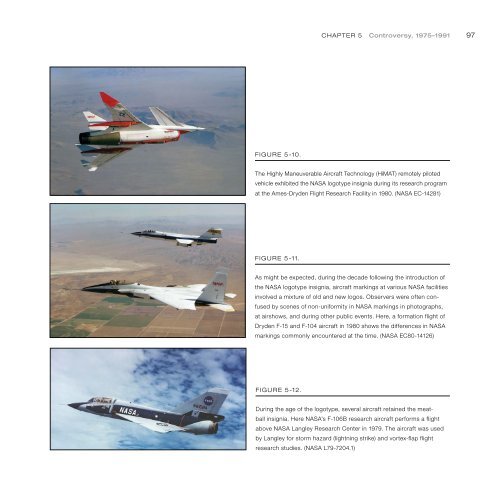You also want an ePaper? Increase the reach of your titles
YUMPU automatically turns print PDFs into web optimized ePapers that Google loves.
CHAPTER 5 Controversy, 1975–1991<br />
97<br />
FIGURE 5-10.<br />
The Highly Maneuverable Aircraft Technology (HiMAT) remotely piloted<br />
vehicle exhibited the NASA logotype insignia during its research program<br />
at the Ames-Dryden Flight Research Facility in 1980. (NASA EC-14281)<br />
FIGURE 5-11.<br />
As might be expected, during the decade following the introduction of<br />
the NASA logotype insignia, aircraft markings at various NASA facilities<br />
involved a mixture of old and new logos. Observers were often confused<br />
by scenes of non-uniformity in NASA markings in photographs,<br />
at airshows, and during other public events. Here, a formation flight of<br />
Dryden F-15 and F-104 aircraft in 1980 shows the differences in NASA<br />
markings commonly encountered at the time. (NASA EC80-14126)<br />
FIGURE 5-12.<br />
During the age of the logotype, several aircraft retained the meatball<br />
insignia. Here NASA’s F-106B research aircraft performs a flight<br />
above NASA Langley Research Center in 1979. The aircraft was used<br />
by Langley for storm hazard (lightning strike) and vortex-flap flight<br />
research studies. (NASA L79-7204.1)


